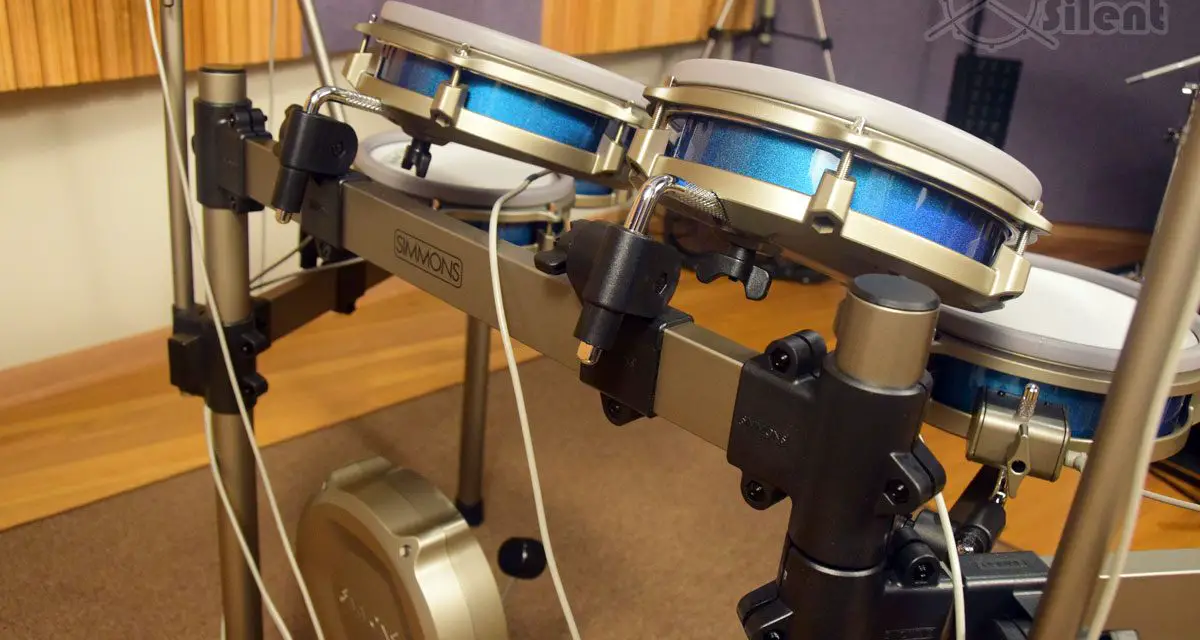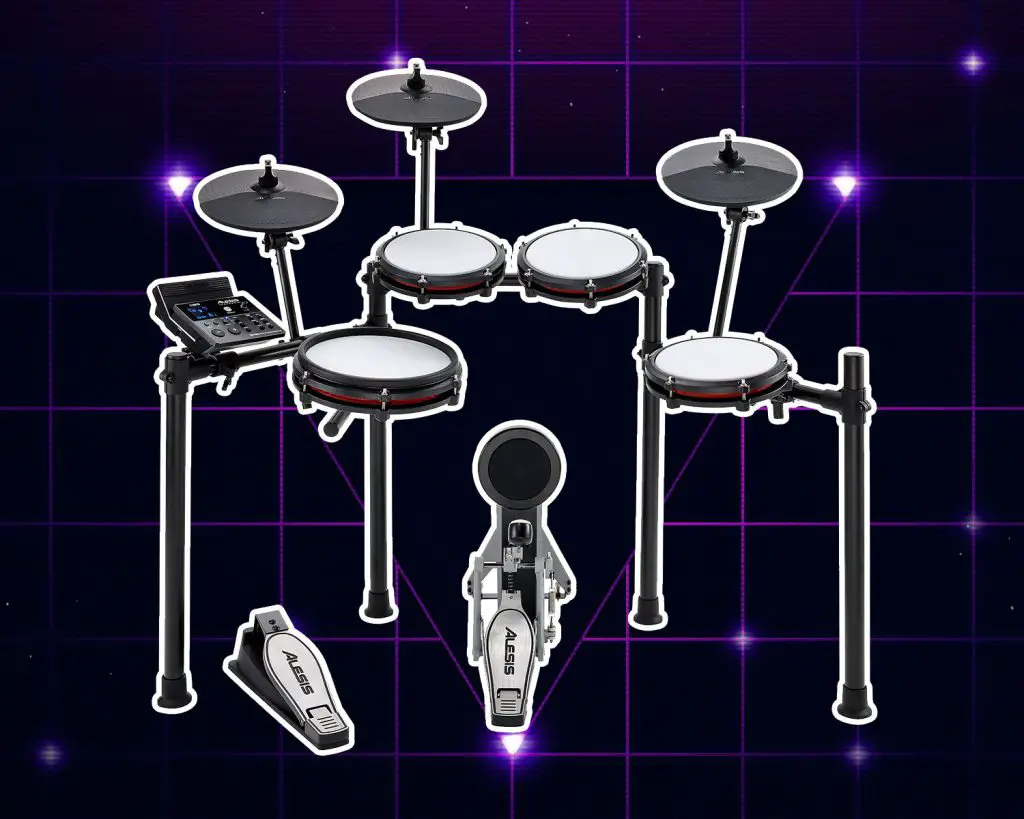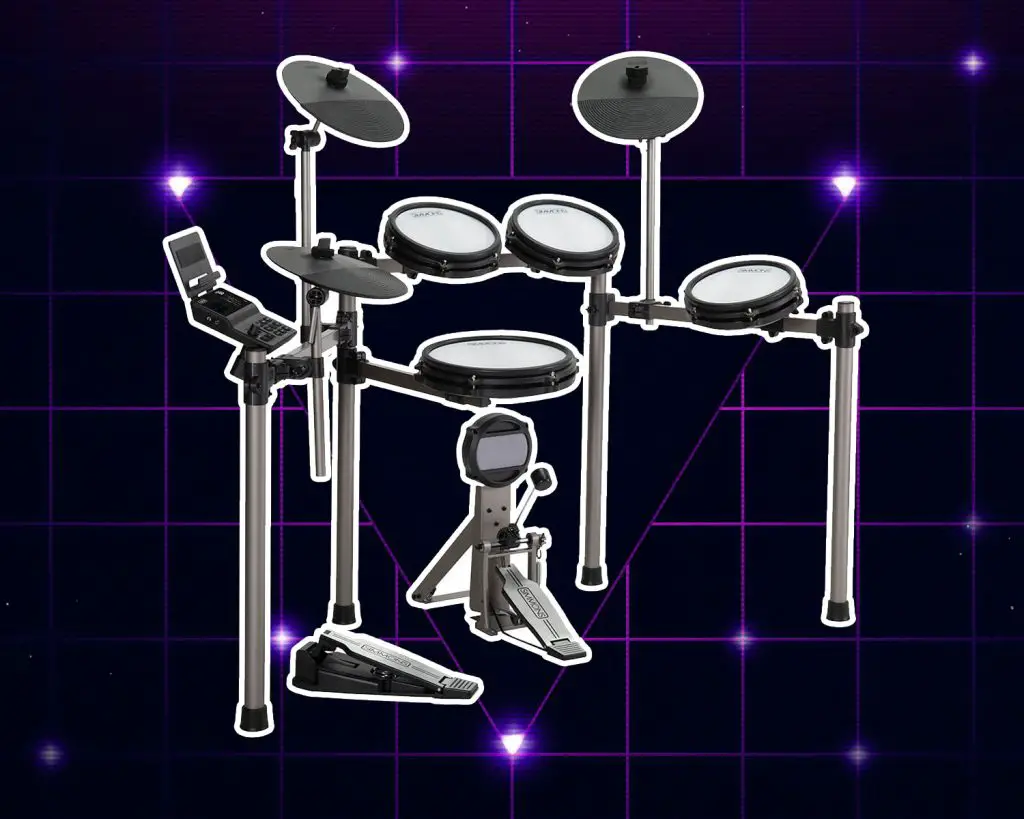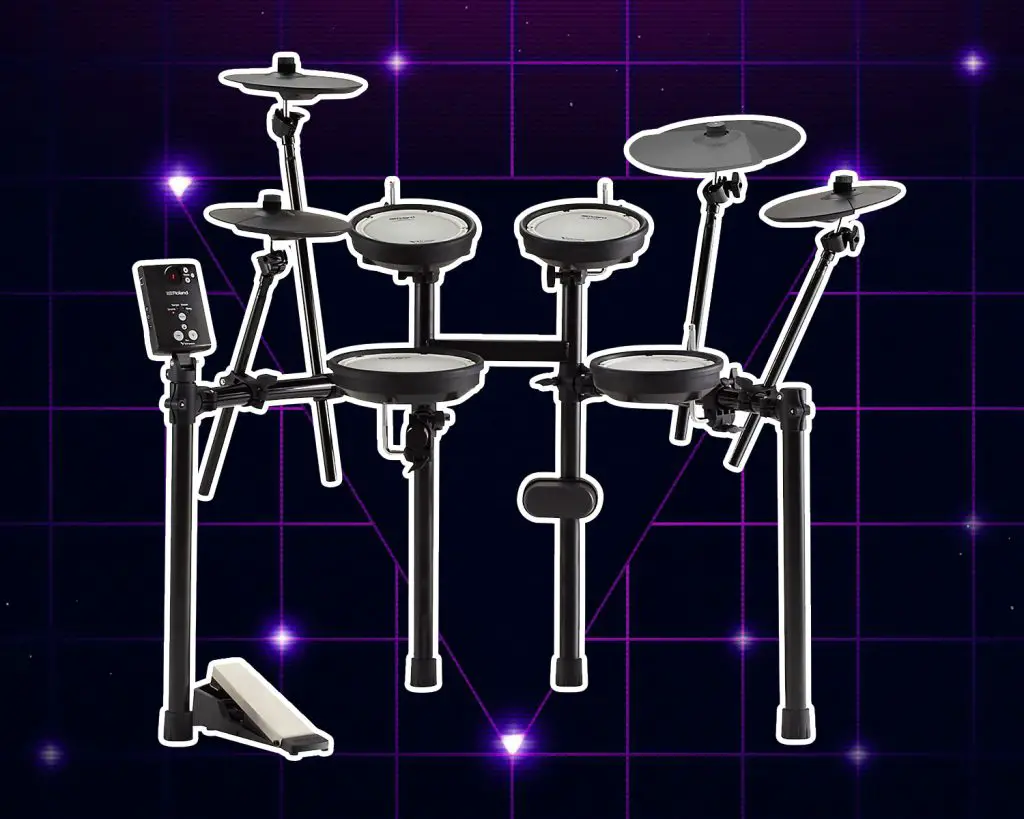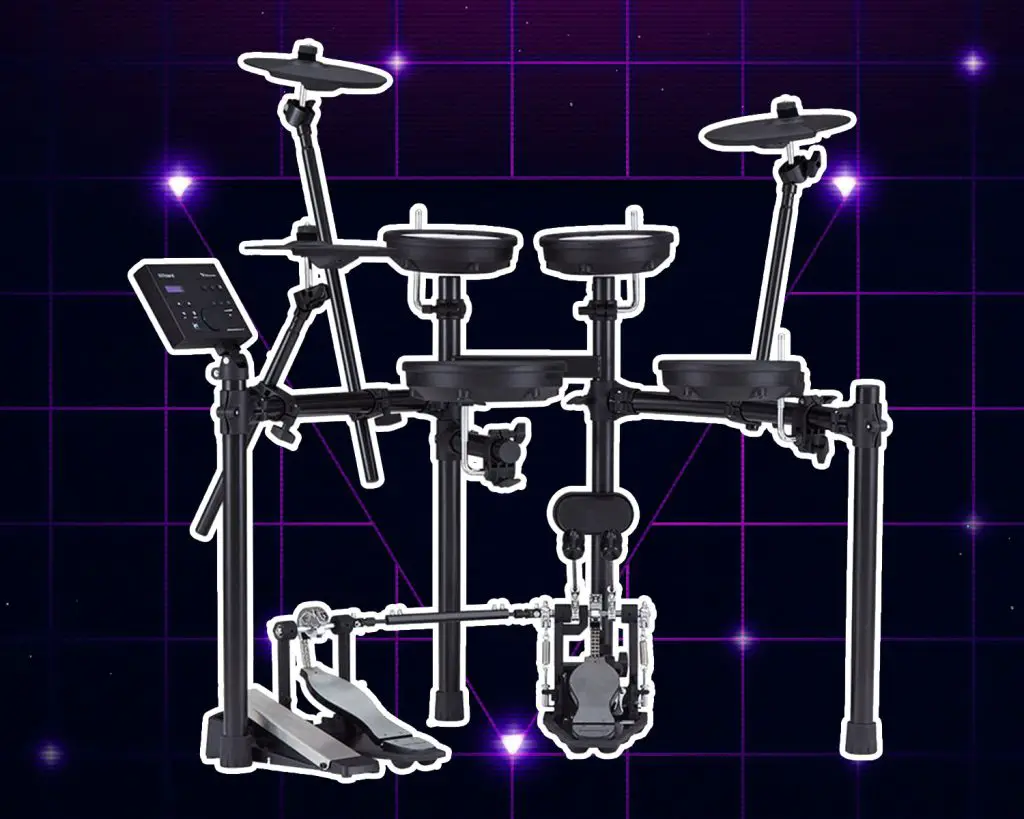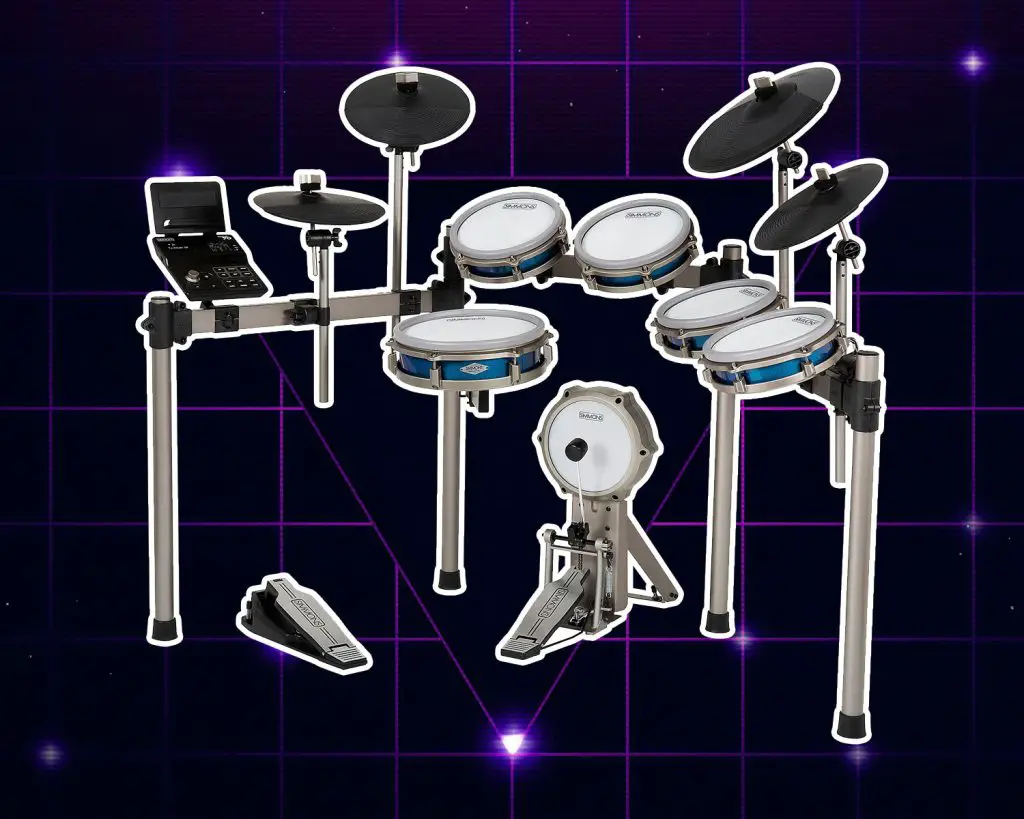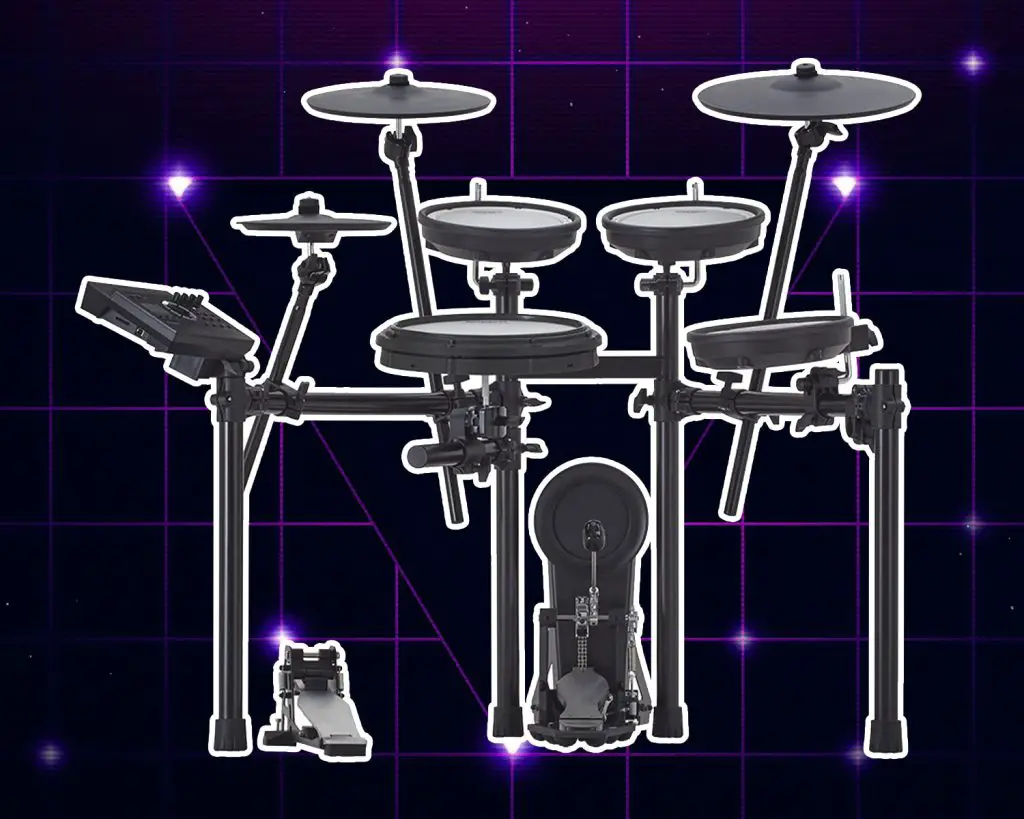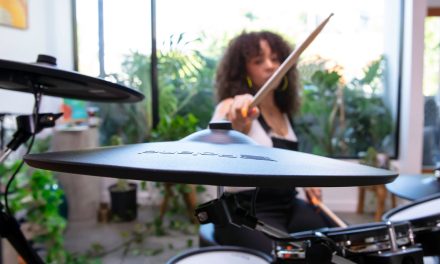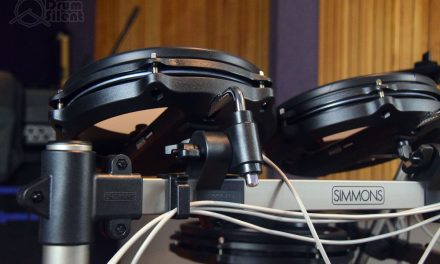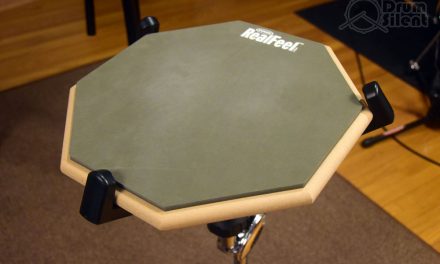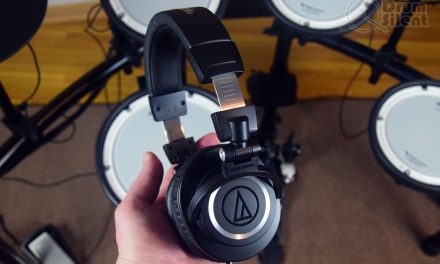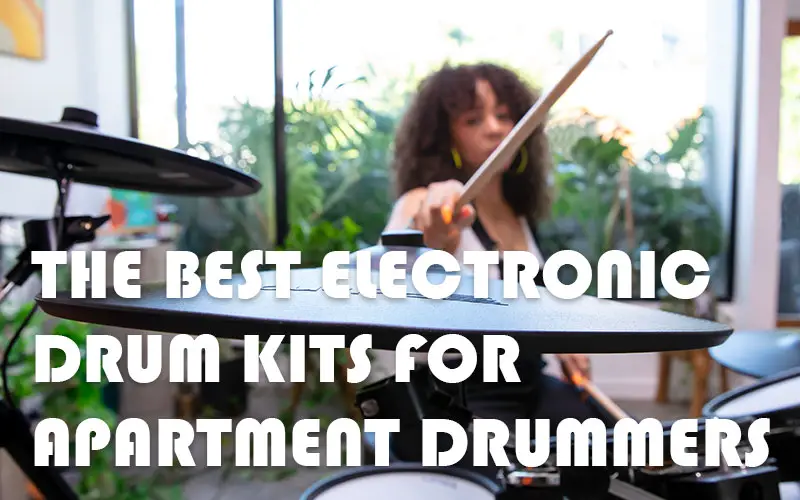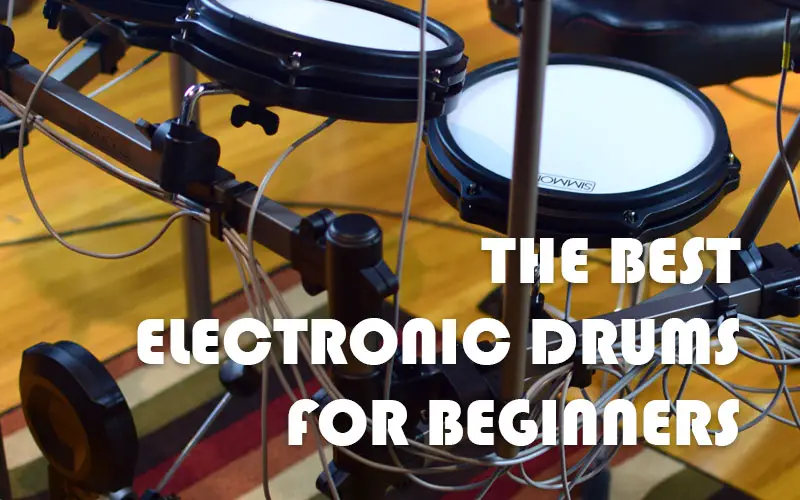Electronic drum kits are a good option for beginner drummers due to their low entry level cost, coaching features and low noise levels. Not everybody has a place to set up an acoustic drum kit, and that’s where electronic drum kits can fill a nice gap and allow a newer drummer to get those crucial practice sessions in.
Our Recommendations for Electronic Drum Kits for Beginners
We like to recommend well-rated budget to intermediate level drum kits for new drummers who are just starting out. It’s usually better to wait and get a more expensive kit if you stick with drumming for a while and find that you’re outgrowing the capabilities of a cheaper drum kit. It’s pretty easy to sell or trade in a budget kit and upgrade to a better one later on.
On the flip side, if a drum kit is too cheap or lacking in capabilities it might not be very much fun to play, which could discourage a new drummer from wanting to practice or play more often. So that’s why we like to stay away from the cheapest of the cheap kits for beginners as well. There’s a fine line in there somewhere.
So keeping that in mind, here’s our recommendations for beginner electronic drum kits.
Alesis Nitro Max
The Nitro Max can be a good option for beginners due to it’s low price point at $400 and the features it brings to the table. It’s a pretty fun kit to play and it doesn’t take up much space at all. In fact it is a very lightweight kit and it’s easy to move it around or move out of the way.
The Nitro Max has a 10 inch, dual-zone, mesh snare pad which has good response for a budget kit and it doesn’t very too small. The 8 inch, single-zone tom pads are also mesh and I like how the rims have a lower profile so it’s easier to strike the drum heads. The cymbal pads are all single zone pads and are pretty basic, but that’s to be expected in this price range. The hi-hat pedal feels pretty good for a budget kit, which is a plus.
It also comes with a kick drum pedal which is a nice bonus. I’m not a fan of the kick pedal controllers that some of the cheaper kits have, even for beginners. Using a proper kick drum pedal is a good idea right from the start.
The Nitro Max module is easy to use and it has coaching features and a metronome built in which can be good for beginner drummers. The module allows you to edit and create custom drum kits which can be fun for beginner drummers to play around with.
It comes with a free 90 day subscription to Drumeo which is pretty sweet, and that can be useful for both self taught drummers as well as those taking lessons. It also comes with a free version of the BFD drum module which can used on your computer.
There are some drawbacks to this kit. It has a somewhat wobbly rack and it sits lower which can be a drawback for taller drummers. However we have some suggestions to deal with those issues, which mostly involves putting the snare pad on a snare stand instead of mounting it on the rack and using risers to bring the kit up to a taller height if needed.
Check Pricing or Buy Now
Amazon
Guitar Center
Simmons Titan 50
The Simmons Titan 50 is a good pick for beginners and it costs about $450 but can often be found on sale for less. This kit is compact, lightweight and is easy to move around if needed. The rack comes fully assembled in the box which makes it easier to put this kit together, and it’s very sturdy as well.
The pads on this kit are pretty fun to play for a budget drum kit. This kit has a 10 inch, dual-zone snare pad that has good response and does excellent rim shots. I really like the snare pad on this kit. The 8 inch tom pads are single zone and also have mesh heads. The cymbal pads are all single zone, which is to be expected for a budget level kit.
This kit comes with a proper single kick drum pedal which a big reason why we like it for beginners. The kick tower is large enough to fit a double bass pedal if you want to learn double bass, but you’ll need to buy your own double bass pedal.
The drum module is good for beginner drummers and has some fun features to play around with. The most important being the metronome built in, but it also has some other coaching features. You can also edit the drum kits and create your own custom drum kits which is fun, and the Simmons Drums 2 app allows you to edit your kits with a more visual interface if you have an iOS or Android device.
I personally like the Titan 50 more than the Nitro Max due to the more stable rack but they are very similar when compared side by side in terms of features.
Check Pricing or Buy Now
Guitar Center
Roland TD-1DMKX
The Roland TD-1DMKX is a good pick for beginner drummers due to it’s lower price point at $600 and it’s a great entry level into the Roland drum ecosystem. It’s one of Roland’s more basic sound modules but the rack is very sturdy and the pads are very responsive in terms of feel and play-ability. I currently have one of these in my apartment for practicing and I really like it.
This kit has a 10 inch, dual-zone, mesh snare pad which is ideal for a budget level kit. The toms are 8 inch, single-zone, mesh pads.
One nice thing about the TD-1DMKX is that it comes with two crash cymbal pads as well as a slightly larger ride cymbal pad, which gives you an extra cymbal pad out of the box when compared to the Titan 50 and the Nitro Max. All of the cymbal pads are single zone. There is another version of this kit, the TD-1DMK, which has one less crash cymbal pad. So keep an eye on which version you buy if you decide to go for one of these.
The hi-hat controller feels really good for a cheaper kit and it has a good action for quicker hi-hat snaps and stuff like that.
The kick pad attaches directly to the rack which makes it just a little more compact and less equipment to haul if you need to move this kit around. The kick pad is wide enough to support a double bass pedal which is great if you want to learn double bass.
The rack is very sturdy and it sits just a little higher than most other kits I’ve tried in this price range. I like that since I’m about 6′ 3″, and the height of this kit works great for me.
The TD-1 module is super basic, but that’s not necessarily a bad thing for a practice kit. It has 10 preset kits which all sound really good, but there are no custom kit slots and no sound editing features. This module is designed more to just turn it on, pick a kit and play. I’ve been using this kit quite a bit lately and the lack of sound design doesn’t bother me at all since I just need something to practice with and the preset sounds are more than good enough for practicing.
Check Pricing or Buy Now
Guitar Center
Roland TD-07DMK
We want to also mention the Roland TD-07DMK. It’s very similar to the TD-1DMKX but with a better sound module and one less cymbal pad. This kit costs $800 so it’s still more affordable but not quite as cheap as the TD-1DMKX.
This kit uses the same rack and pads as the TD-1DMKX except for that it doesn’t include the extra ride cymbal pad. The advantage that this kit has is TD-07 drum module. This module has more preset kits and also allows you to create and save custom drum kits, which is something you can’t do with the TD-1DMKX.
So if you prefer to have more preset kits, some drum kit editing capabilities and don’t mind one less cymbal pad, this can be worth taking a look at over the TD-1DMKX.
Check Pricing or Buy Now
Amazon
Guitar Center
Simmons Titan 70
The Simmons Titan 70 can be a good beginner kit due to it’s price point of around $800 and it’s larger feature set that will feel good as you increase your drumming skills. You might not grow out of this one as quickly as some of the other budget level kits.
While this kit has a lot of pads, it’s still fairly compact, lightweight and easy to move around. It uses the exact same rack as the Titan 50 to give you an idea of it’s size.
The snare pad is a 10 inch, dual-zone mesh pad and I like how it handles rim shots. The toms are 8 inch, dual-zone mesh pads that can generate different sounds from both the head and the rim. This is nice if you want to be able to assign more cymbal sounds to the tom rims, for example. The hi-hat and crash cymbals are still pretty basic single zone pads, but the ride pad is a really nice triple zone pad that has a bell zone, which is pretty awesome for a kit a this price point.
The kick tower pad is bigger than the one on the Titan 50, and it offers more overall surface area to work with. It’s a good kick tower if you want to learn double bass. This kit also comes with a proper single bass drum pedal which is a good value for beginners who don’t already have a bass pedal.
The Titan 70 module has a good amount of preset drum kits and the ability to create and save custom drum kits. You can use the Simmons Drums 2 app on iOS or Android to edit kits with a visual interface. It also has the crucial metronome and some other coaching features which are be useful for beginner drummers.
The dual zone toms and the triple-zone ride with a bell are something that you might find more useful as your skills grow, and those features aren’t very common on kits under $1000.
Check Pricing or Buy Now
Guitar Center
Roland TD-17KV2
The Roland TD-17KV2 is more expensive at just under $1500 but it can be a good beginner electronic kit if you want to have a more serious kit to grow into and even upgrade over time. This would be a good pick for beginner drummers who have a larger budget to work with and want to avoid the cheaper drum kits.
This kit has a compact rack which is good since it won’t take up a lot of space and it’s lightweight if you need to move it around. The rack is very sturdy. It’s actually the same rack used on the cheaper TD-1 and TD-07 kits.
The pads on this kit are larger, which is an advantage. The snare pad is a 12 inch, dual-zone mesh pad with good responsiveness and feel. The tom pads are all 10 inch, dual-zone pads which can trigger sounds from both the head and the rim.
The cymbal pads are Roland’s new thinner cymbal pads which move and feel more like acoustic cymbals. The ride is a triple-zone pad with a bell zone, and the crash and hi-hat pads are dual-zone pads with bow and edge zones. These cymbal pads feel really good to play and you will appreciate having their triggering capabilities as your skills increase.
The hi-hat pedal uses a pedal controller, which helps keep the price of the kit down and you won’t have to buy a separate hi-hat stand, so that’s good for the overall budget. The controller pedal feels great so it’s not a huge disadvantage.
The kick drum pad is large enough to support a double bass pedal. You will need to provide you own bass drum pedal though, which will be an extra expense.
The TD-17 module is a nice step up from Roland’s cheaper modules. There are 70 nice sounding preset drum kits and you can edit and save custom drum kits. You can import your own drum samples which can also be fun to play around with. There are also the usual metronome and coaching features which are great for both beginner and experienced drummers.
The advantage of going with a kit like this as a beginner is that you won’t feel like you need to upgrade anytime soon as you’re skill increase and you demand more from your kit.
Check Pricing or Buy Now
Amazon
Guitar Center
Why Is an Electronic Drum Kit Good for Beginners?
They take up little space. As a beginner, you might not want to dedicate a lot of space for a drum kit until you know you’re going to stick with it. The smaller kits take up around 4×6 feet of space, some even less. That’s probably half of what an acoustic kit would require. They can be set up in a bedroom corner or in an office. Some kits can even be folded up for storage.
They are affordable. A budget electronic drum kit with some basic features for beginners can cost less than $500. And that’s a for a new kit. If you look out for used kits you can often score deals less than half of that. You can find an acoustic kit for for cheap as well, so we’re not saying an electronic kit will be cheaper. It’s just that the technology has matured enough to the point where electronic drum kit prices aren’t a premium.
Mesh pads are quite playable. There was a time when drum pads were mostly harder rubber surfaces like a practice pad. There still are some rubber drum pads out there, but the industry has largely moved toward mesh drum pads. Mesh drum pads use mesh drum heads to simulate the feel of an acoustic drum head without the noise. They feel great to play and practicing on mesh drum heads can translate well to playing on acoustic drums.
Drum modules have good practicing and learning features. They say you should always use a metronome when practicing and playing drums. A metronome is always a standard feature on any drum module. You’ll have no excuse to not practice along with a click if you can just hit a button on your module to turn it on. Many modules also have learning features and coaching modes, as well as patterns and songs to play along with. These can be very useful for beginner drummers and they’re right at your fingertips with an electronic drum kit.
Having a variety of drum sounds is fun. When you have a smaller budget, you’ll get a lot more sound variety from electronic drums than you will from acoustic drums. Buying extra cymbals and other specialty drums can add up quick. It’s nice to be able to have a variety of sounds to practice with on a smaller budget, and that is an area where electronic drums win.
What Else Will You Need When Starting Out With an Electronic Drum Kit?
Buying a kit isn’t always the only thing you’ll need, unfortunately. Not all drum kits come with everything you need to start playing. Most drum kits will include the rack, a drum module, the pads and all the cables to connect everything. But they don’t always include a kick pedal, a throne, headphones or drum sticks. So it’s good to keep an eye out to see what a drum kit doesn’t include, since those things will be an extra expense.
Kick Pedal
It’s not uncommon for beginner level kits to include a kick pedal of some sort. Usually they are pretty cheap pedals, but they are perfectly fine for beginners and a decent kick pedal can cost a hundred bucks or more. Some budget kits have electronic kick pedals that work similarly to the hi-hat pedal, and they work without a beater striking a pad.
Check out our recommended bass drum pedals.
A Drum Throne
Don’t discount the need for a solid, comfortable drum throne. When you get into a good groove you could be sitting there playing drums for up to an hour or more at a time. If you have a cheap, uncomfortable drum throne, you’ll know it pretty quickly because you’ll have a sore back and sore rear. You’ll get tired of feeling off-balance, and you’ll get tired of the squeaking that cheap thrones tend to do. So just trust us here and get something that is comfortable, even if it’s not the cheapest option.
Check out our recommended drum thrones.
Headphones
Very rarely will an electronic drum kit include a pair of headphones. You’ll need a pair of headphones if you want to play your electronic drum kit quietly. There are so many options available for headphones and it’s possible to find decent drumming headphones for any budget.
Check out our recommended headphones for electronic drumming.
Headphone Extension Cables
Depending on what type of headphones you use, you might want to invest in a headphone extension cable. This will give you a little more freedom of movement around you kit while wearing your headphones. It also makes it easier to get the cable out of the way while you play and makes it less likely you’ll stress the cable jacks by accidentally overextending the length of the cable.
Drum Sticks
Most kits will include a basic pair of drum sticks. Some don’t, though. If you are just starting out, the included stick will be just fine to use. Some people prefer to use nylon tips sticks if they use mesh heads. The reasoning is that they are less likely to have barbs or slivers that damage the mesh drum heads. So that is something to consider. It’s also best to avoid using any drum sticks that you’ve used on an acoustic kit on your electronic drum kit, since worn, chipped sticks could damage the mesh and rubber pads.
Check out our recommended drum sticks for electronic drumming.
A Cable For Connecting Audio Sources
You will at some point want to hook your phone or an MP3 player or some sort of audio player to your drum module to play along with music that you like. To do this, you’ll need a cable that probably didn’t come with your drum kit. Usually you’ll need a 3.5mm stereo cable, but it could vary depending on your equipment.
A Good Rug
Setting up your kit on a solid rug will be essential. The hi hat pedals, kick pads and kick pedals will likely have velcro or spikes to stick to carpeting to keep them in place. Carpeting will also keep the rack stand from moving around and sliding on the floor. Not all rugs are equal. Look for the really stiff or heavy types of rugs that don’t bunch up or wrinkle and that will stay flat on the floor.

